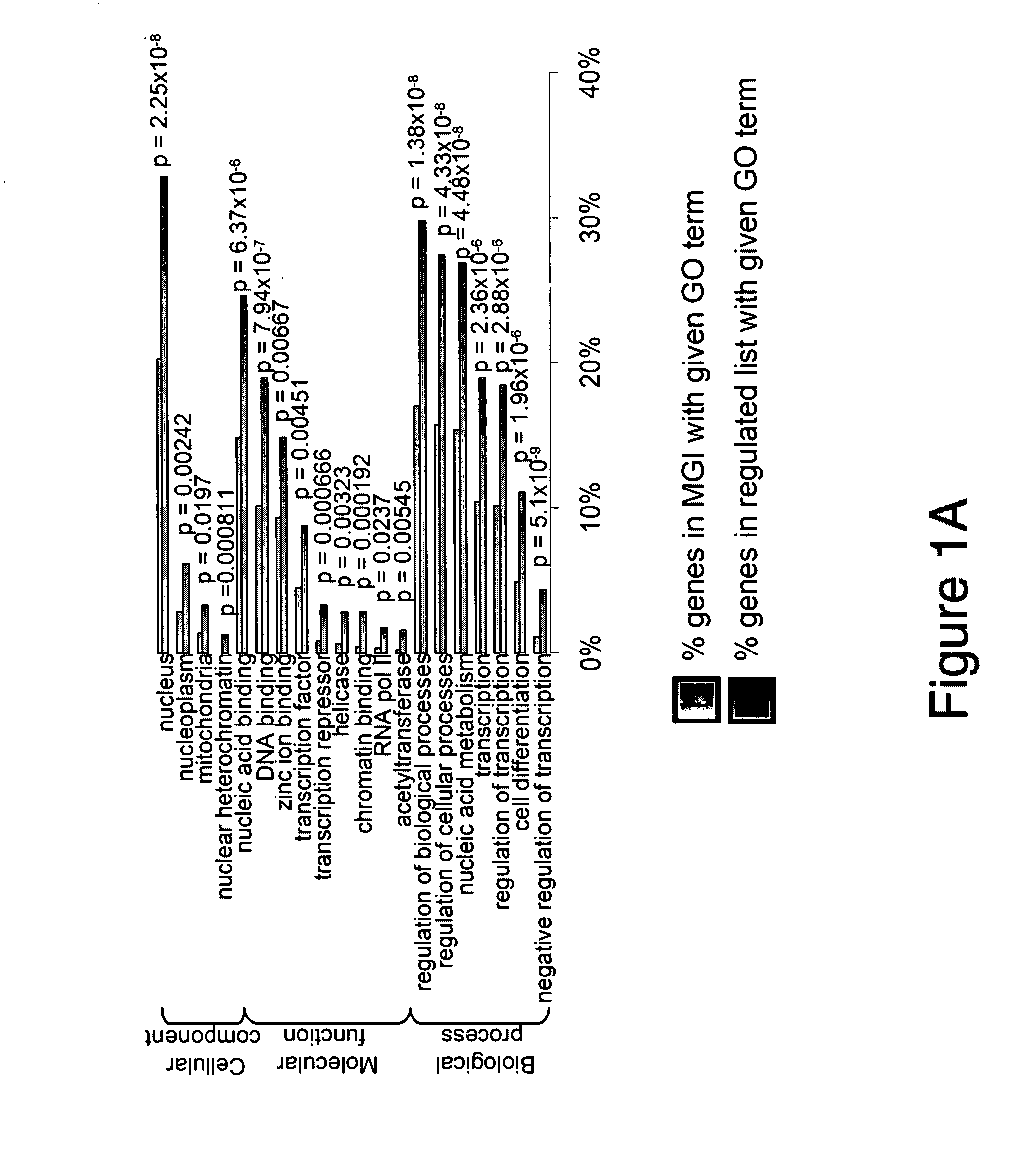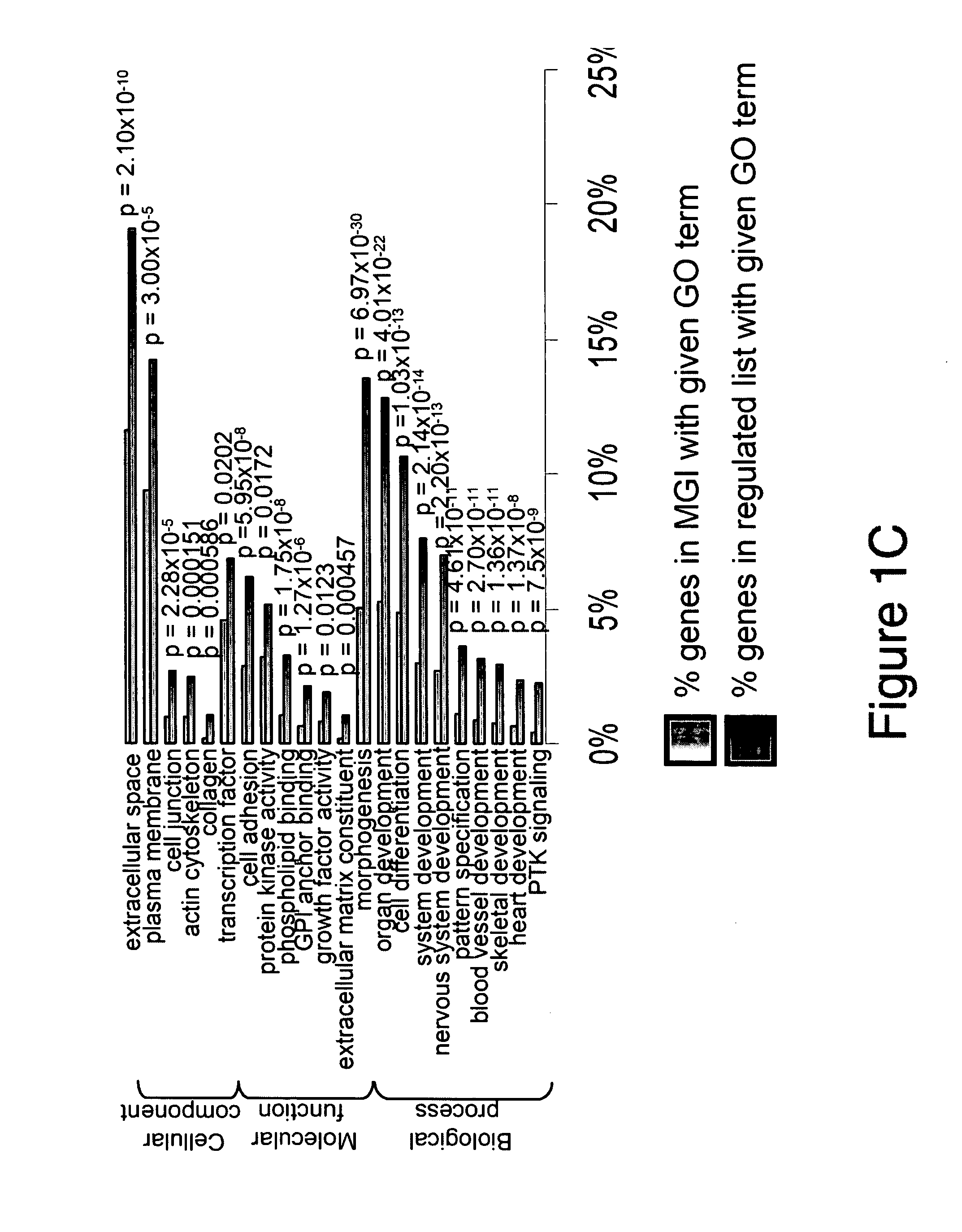Method of suppressing tumour growth
a tumour growth and tumour technology, applied in the field of tumour growth suppression, can solve the problems of cell proliferation, cell lethality, cell proliferation defects, etc., and achieve the effect of preventing tumour formation
- Summary
- Abstract
- Description
- Claims
- Application Information
AI Technical Summary
Benefits of technology
Problems solved by technology
Method used
Image
Examples
example
Materials and Methods
ES Cell Culture
[0054]R1 ESCs and Oct4::eGFP ESCs (Viswanathan et al., 2003, the relevant contents of which are incorporated herein by reference) were cultured at 37° C. and 5% CO2, on a layer of mitomycin-treated embryonic fibroblasts (MEFs) in ESC media consisting of Dulbecco modified eagle serum (DMEM) supplemented with 15% FBS (North Bio, Lot SF30408), 0.1 mM nonessential amino acids, 1 mM sodium pyruvate, 2 mM L-glutamine (all from Gibco), 1000 U / mL leukemia inhibitory factor (LIF) (ESGRO, from Chemicon, batch 11061065) and 100 μM β-mercaptoethanol (Sigma). Differentiation media formulation is described with the specific differentiation protocols listed below. Selection media consisted of ESC media supplemented with 150 μg / mL G418 (Gibco). ESCs were passaged every two days at a ratio of 1:5 by washing with PBS (Gibco), dissociating with 0.05% trypsin (Gibco) for 5 minutes at 37° C. and resuspending in ESC media. Media was changed daily.
Time Course of OCT4::e...
PUM
| Property | Measurement | Unit |
|---|---|---|
| Fraction | aaaaa | aaaaa |
| Fraction | aaaaa | aaaaa |
| Level | aaaaa | aaaaa |
Abstract
Description
Claims
Application Information
 Login to View More
Login to View More - R&D
- Intellectual Property
- Life Sciences
- Materials
- Tech Scout
- Unparalleled Data Quality
- Higher Quality Content
- 60% Fewer Hallucinations
Browse by: Latest US Patents, China's latest patents, Technical Efficacy Thesaurus, Application Domain, Technology Topic, Popular Technical Reports.
© 2025 PatSnap. All rights reserved.Legal|Privacy policy|Modern Slavery Act Transparency Statement|Sitemap|About US| Contact US: help@patsnap.com



